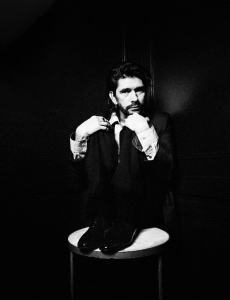Do more frames per second help or hinder the true meaning of what you’re watching? From Issue 9, The Film Issue

How real should a movie be? How far should it reproduce the world in which we live and breathe and go about our business? Ever since the first 3D feature in 1922, filmmakers have tried to push as far in the direction of total realism as possible – to make the audience feel they are “in the picture”. Essential to making a film seem “real” is its speed, or the number of frames projected per second to create an acceptable illusion of movement.
Traditionally, economics was the deciding factor. After the chaos of frame rates in silent cinema, 24fps was settled on as the lowest number that could produce a smooth illusion of movement- more would increase the amount of film stock and the expense of production. Thomas Edison reputedly said that anything less than 46fps would be too hard on the eye.
At last Edison has an ally. In 2012, the director Peter Jackson filmed The Hobbit at the HFR (high frame rate) of 48fps – it was shot digitally and in 3D for an even more immersive sense of reality. HR introduces a new problem however: the illusion of real space, and the clarity of detail, may well seduce the eye but they leave the mind unsatisfied. A century of “normal” movies has accustomed us to the aesthetic pleasures of comparing fantastic vs realistic. Perhaps we don’t want to “live” cinema so much as enjoy a cinematic experience.
Some film experts would have welcomed HFR, seeing it not as a violation of cinema but as a true expansion of it. The Soviet director Sergei Eisenstein, enamoured with the “American mountains” (the Russian term for the fairground rollercoaster ride), thought cinema should be a vehicle for terrifying thrills – a revolutionary shock to our cosy submersion in old-fashioned dramatic illusion.
Given the historical perspective, Peter Jackson was right when he said there is nothing magic about 24fps. The contradiction that keeps coming up is that while cinema continues to transform itself technologically, we’re still looking for something essentially cin-ematic. “The cinema is truth 24 times a second,” Jean-Luc Godard once said. But is 48 times a second simply the truth taken too far?
Complaints about The Hobbit range from it seeming like a video game to the illusion-destroying way it exposes the reality of makeup and special effects. Perhaps total immersion in a film is not the same as being able to assess its real artistic value, or perhaps there’s another truth about HR we haven’t discovered yet. In nearly a century, the argument for and against 3D still remains unset tled and it looks like HR may become partof a similar long-running debate.




